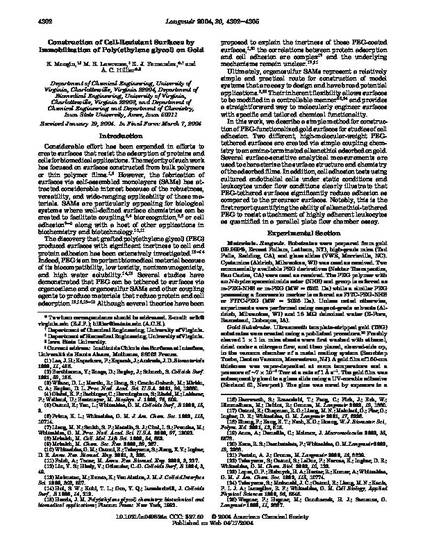
Article
Construction of Cell-Resistant Surfaces by Immobilization of Poly(ethylene glycol) on Gold
Langmuir
Document Type
Article
Disciplines
Publication Date
1-1-2004
DOI
10.1021/la049824a
Abstract
Considerable effort has been expended in efforts to create surfaces that resist the adsorption of proteins and cells for biomedical applications. The majority of such work has focused on surfaces constructed from bulk polymers or thin polymer films. However, the fabrication of surfaces via self-assembled monolayers (SAMs) has attracted considerable interest because of the robustness, versatility, and wide-ranging applicability of these materials. SAMs are particularly appealing for biological systems where well-defined surface chemistries can be created to facilitate coupling, biorecognition, or cell adhesion along with a host of other applications in biochemistry and biotechnology.
Copyright Owner
American Chemical Society
Copyright Date
2004
Language
en
File Format
application/pdf
Citation Information
K. Mougin, M. B. Lawrence, E. J. Fernandez and Andrew C. Hillier. "Construction of Cell-Resistant Surfaces by Immobilization of Poly(ethylene glycol) on Gold" Langmuir Vol. 20 Iss. 10 (2004) p. 4302 - 4305 Available at: http://works.bepress.com/andrew_hillier/3/

This article is from Langmuir 20 (2004): 4302-4305, doi: 10.1021/la049824a. Posted with permission.